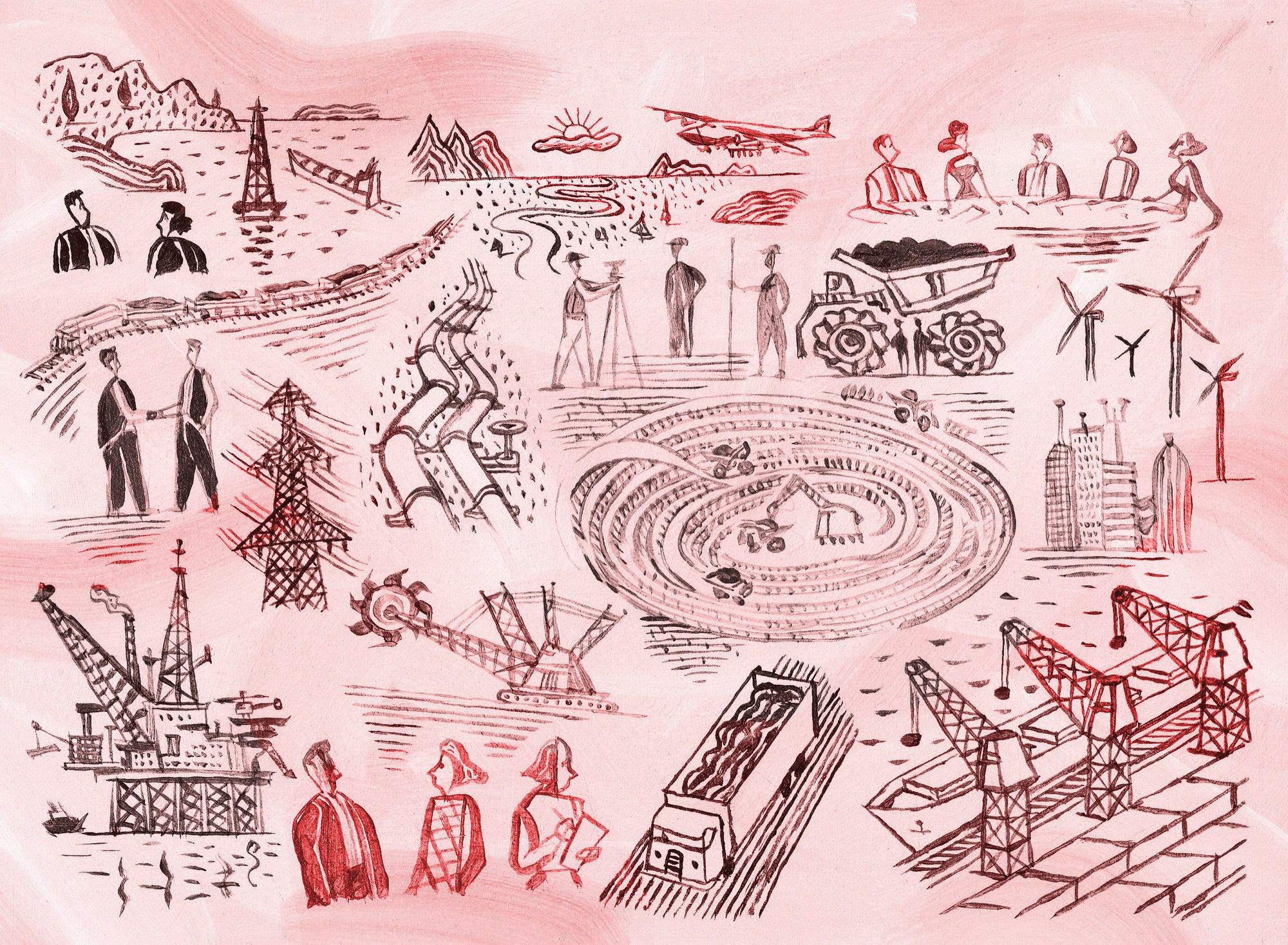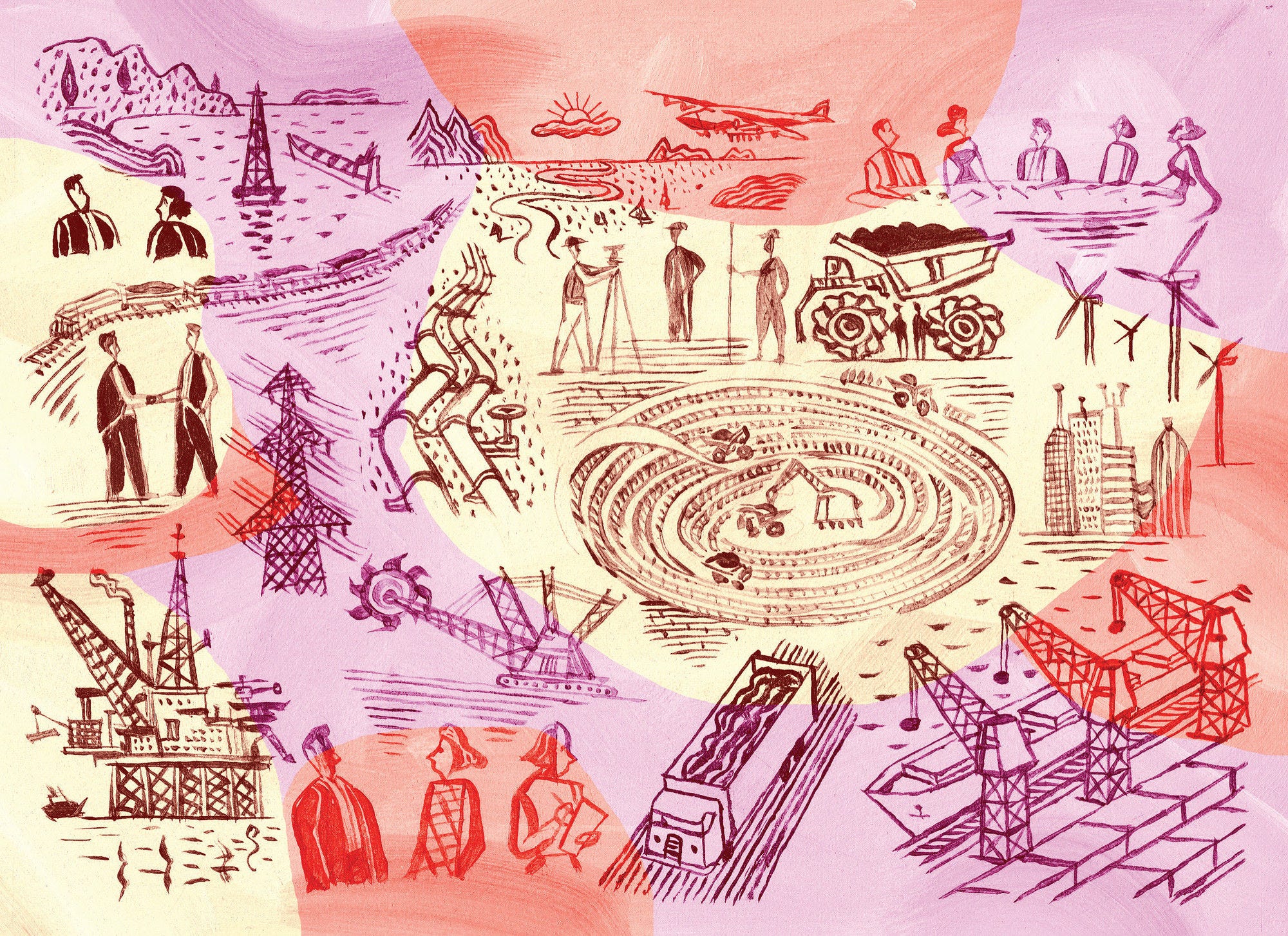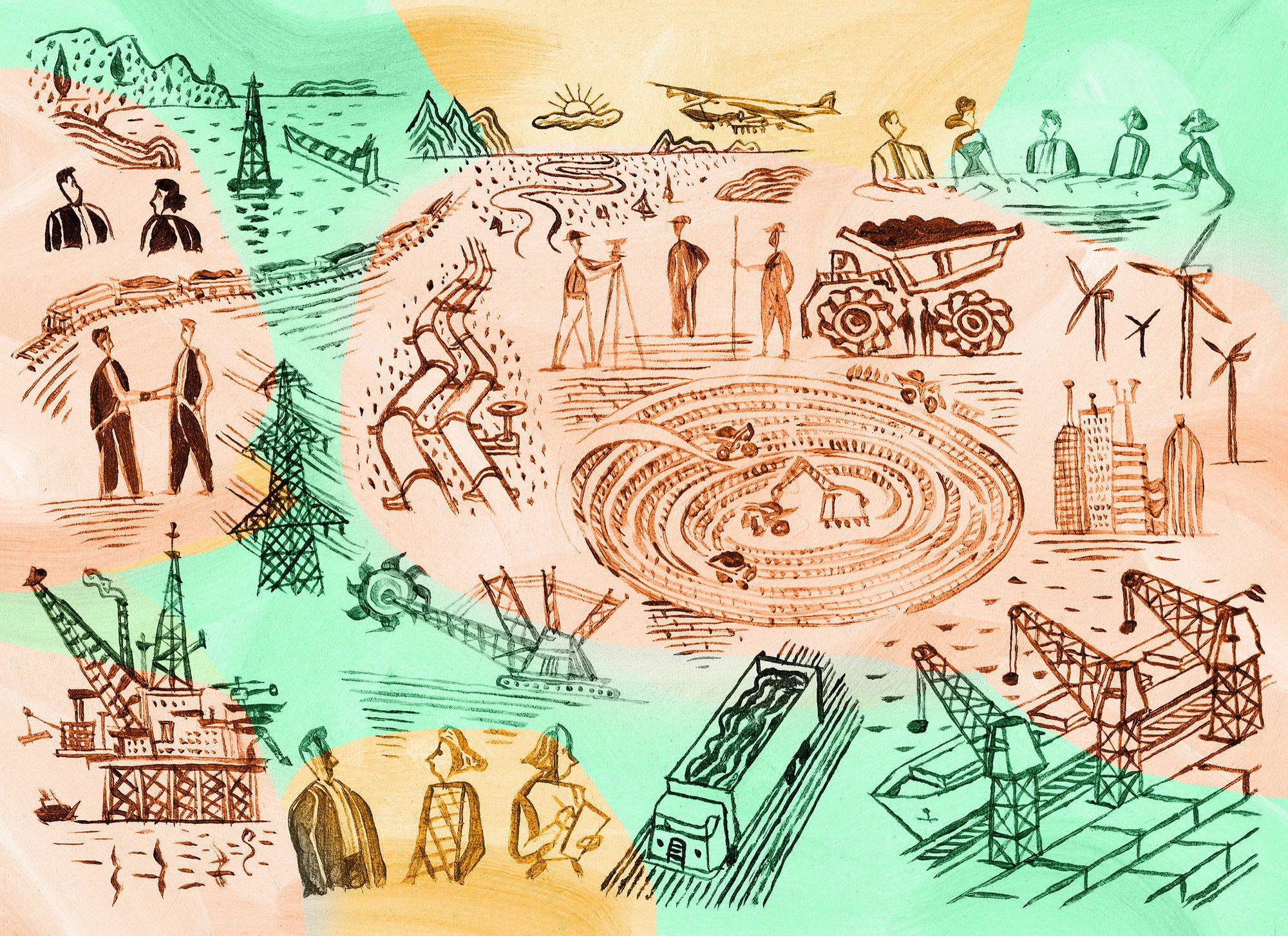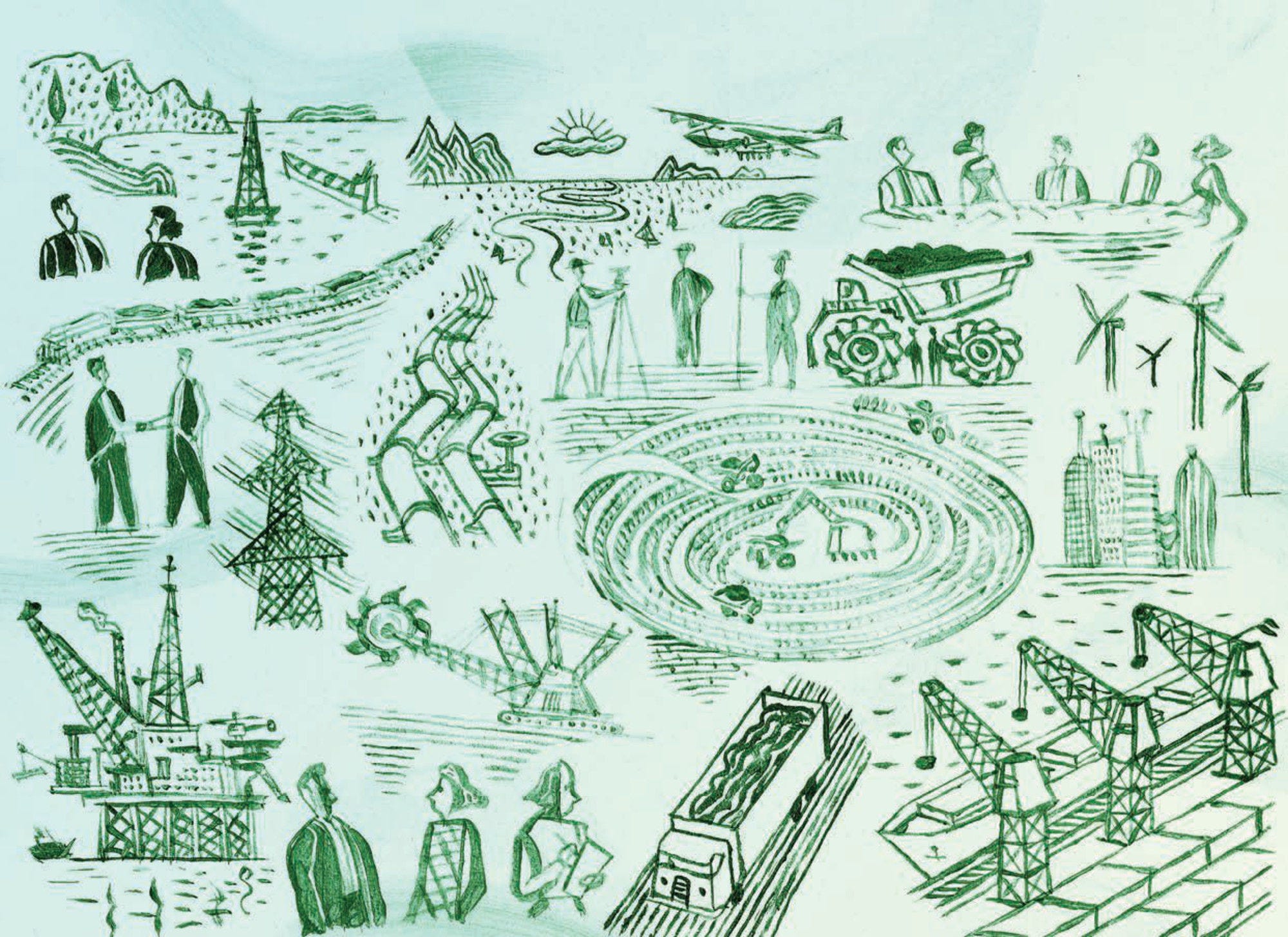The initiative takes a comprehensive approach to strategically address the complexities of mining regions, focusing on economic, social, and environmental dimensions. Regarding economic wellbeing, the initiative promotes strategies for resilience in mining regions through diversification, entrepreneurship, and value-added activities, while addressing skills matching. Socially, it focuses on strategies for improved opportunities for women and youth in the mining value chain, stronger benefit-sharing agreements, and partnerships for community infrastructure, including housing and public services. Regarding the environment, there is an emphasis on practices to enhance the role of regions in the green transition and circular economy practices in mining as well as environmental protection and monitoring.
Mining regions and cities
The OECD Mining Regions and Cities Initiative is a platform for sharing good practices and policy advice to improve the economic, social, and environmental well-being of regions specialised in mining activities. The initiative produces tailored case studies, a statistical toolbox to benchmark actions across regions, and global events. It aims to foster partnerships across governments, the private sector, civil society, and Indigenous communities.

Key messages
The global transition to a net-zero economy by 2050 requires a substantial increase in the supply of critical minerals. For instance, demand for copper is expected to triple and lithium to increase tenfold by 2030, highlighting the relevance of these minerals in renewable energy technologies.
Critical minerals are concentrated in specific territories, making the role of subnational governments and stakeholders in mining regions crucial for the green transition and local development. Managing the challenges and opportunities that mining brings at the subnational level requires careful planning and sound strategies to balance increased mineral extraction, sustainable development, and local added value. Some mining regions also face mineral depletion and mine closures, requiring coherent policies for a smooth economic and social transition. The OECD helps develop strategies that align with global energy goals and promote positive economic, social, and environmental outcomes in mineral-rich regions.
Mining regions are home to diverse communities, who are linked to rural ecosystems and environmental amenities. Across the globe, over half the critical minerals resource base are located on or near Indigenous land. Indigenous communities have historic and deep-rooted connections to the land, positioning them uniquely as stewards of biodiversity and protectors of territories. Meaningful engagement with these communities is needed to drive policies and governance schemes that promote more sustainable mining developments.
The OECD's commitment to tailor policy recommendation and exchange local experiences showcases a shift toward more inclusive decision-making. Ensuring the participation of Indigenous peoples and local communities at the decision-making enables bottom-up, holistic solutions that include and respect traditional knowledge. This collaborative effort aims to turn potential threats from new mining projects into opportunities, making communities central to achieving a sustainable and equitable green transition.
OECD Mining Regions and Cities Initiative
Context
Mining Regions Toolkit: Measuring well-being of OECD mining regions relative to OECD rural average
To better understand the effects of mining on regional development, this toolkit identifies 13 indicators to measure economic, social, and environmental well-being standards across OECD mining regions compared to other OECD regions. This statistical toolkit serves to identify specific opportunities and challenges to inform policy and strategic actions.
For instance, on average, OECD mining regions exhibit several relative strengths, including higher GDP per capita, a larger share of young population, greater growth of green land cover, and lower risks of drought due to water depletion, compared to OECD rural regions. However, they also face notable challenges, such as lower levels of innovation, higher greenhouse gas emissions, less economic diversification, and a lower share of women in the workforce. Recognising the diverse performance of mining regions in various dimensions helps shape effective policy practice.
Timeline
The OECD Mining Regions and Cities Initiative conducts events and case studies across OECD countries, holding an annual Conference in various OECD mining regions.

Latest insights
-
 oecdcogito.blog9 August 2024
oecdcogito.blog9 August 2024
Related publications
-
 Working paper28 October 2020
Working paper28 October 2020
Related events
Programmes
-
The OECD plays a pivotal role in land use, addressing its impact on a wide range of outcomes from daily quality of life to the environmental sustainability of urban and rural communities. Acknowledging the significant economic and sentimental value of land, the OECD offers systematic analysis and policy recommendations, emphasizing the need for coordinated approaches across public policies affecting land use beyond traditional planning systems. This approach aims to harmonize incentives, promoting integrated and sustainable spatial development while considering economic, environmental, and social values associated with land. Furthermore, the OECD advocates for land use planning to be a political and democratic process, reflecting and developing a shared community vision through strong public engagement and communication. Through its research program on land use governance and case studies, the OECD champions more integrated approaches that align fiscal and policy incentives with land use objectives, supporting climate change adaptation and mitigation and fostering more sustainable and equitable communities.Learn more
-
Rural regions across the OECD depend on diverse economic engines for growth. Improved communications, increased mobility and reduced geographic distances are important drivers of economic change in these areas. While innovation is key to unlocking opportunities, the motivations and innovators in rural settings are not well-defined. Exploring and understanding this knowledge will empower rural areas to improve their growth and well-being, with a focus on better engaging women, youth, and older workers.Learn more
-
The OECD Conference of Mining Regions and Cities is a platform to exchange policies and good practices to improve economic, social, and environmental wellbeing in mining regions, across the public and private sectors, academia, civil society organisations, and Indigenous representatives.Learn more
Related policy issues
-
Many places in the OECD face declining and ageing populations. This trend will continue. 14 OECD countries are expecting to lose population by 2040. In some regions this trend will be lasting and strong, with some projected to lose 20% or more of their population by 2050. Strong population shrinkage brings challenges that are best addressed at the regional and local level. For example, the costs of services and infrastructure provision rise per person, while quality and access risks declining. Affected regions typically struggle with labour and skill shortages, deteriorating real estate values, eroding tax bases and vacant buildings. The effects vary across regions: while people often migrate from rural to urban regions, some cities and towns are also affected by population decline. Local policies, delivered with national support, are necessary to foster well-being, economic and environmental sustainability. They need to cover government finances, infrastructure and service provision as well as multilevel governance.Learn more
-
Approximately 39.5 million Indigenous peoples live across 14 OECD countries, and they are concentrated spatially, making geography a key factor in shaping well-being outcomes. Although Indigenous peoples make up about 5% of the world’s population, they represent 15% of the world’s extreme poor and one-third of the rural poor (UN). These gaps are larger in rural and remote areas. In comparison to non-Indigenous populations, the employment gap is more pronounced in rural regions, with an average difference of 20.2 percentage points compared to 8.4 percentage points in urban areas across OECD member countries like Australia, Canada, Mexico, New Zealand, Sweden and the United States).Learn more
-
The OECD Principles on Rural Policy embody 20+ years of OECD work on rural development. They provide guidance for an integrated approach to urban-rural development, enhancing the sustainability and well-being of rural areas.Learn more
-
Improving people's well-being requires sound evidence-based policies. We produce indicators for regions, cities and local areas in all areas of well-being. We promote international comparability, as well as the use of cutting-edge methods and new sources of data. Our network of experts advises on best practices for the production and use of high-quality statistics.Learn more
-
The OECD provides data, best practices, and tools to help policymakers adopt integrated, flexible, and sustainable solutions for service delivery in rural areas.Learn more
-
Across the world, people’s daily activities centre around clusters of population and economic activity. Settlements – cities, towns and villages – provide jobs and access to services for their own residents and others nearby. Thriving settlements can promote wellbeing while addressing societal challenges in regions and countries.Learn more







